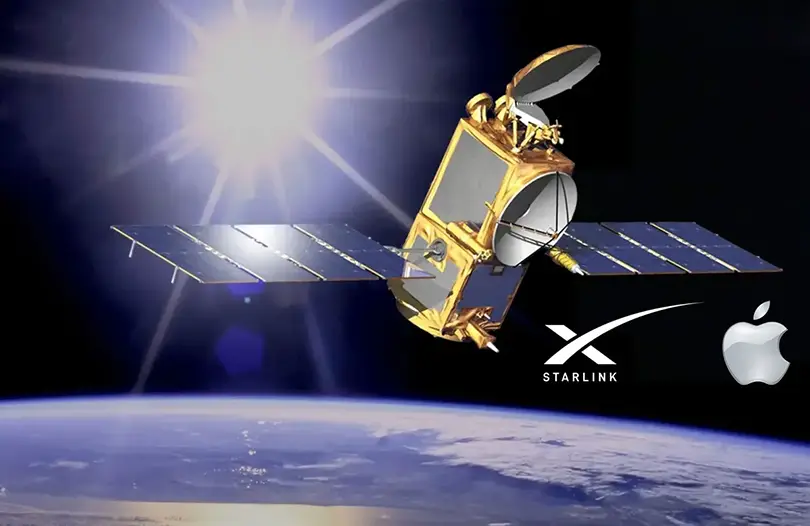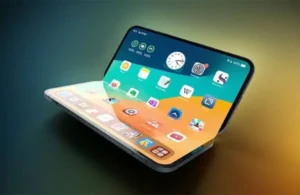Imagine standing in the middle of the Mojave Desert, miles from the nearest cell tower. You pull out your iPhone—and everything just works. Maps load instantly, videos stream smoothly, and calls connect without delay.
No signal? No problem. Because the signal now comes from space.

According to industry insiders, Apple is reportedly negotiating with Elon Musk’s SpaceX to integrate Starlink satellite connectivity into future iPhones.
If an agreement is reached, the first model with this feature could be the iPhone 18 Pro, expected in 2026.
The end of dead zones
Even in tech-savvy California, there are still places where your phone is nothing more than a camera. Drive into the Sierra Nevada, hike through Yosemite, or venture out into the Central Valley, and the bars vanish.
Starlink could make that a thing of the past.
With more than 6,000 low-orbit satellites already circling Earth, Starlink delivers fast, stable internet to remote regions—and soon, it may do the same for your phone.
The idea is simple but revolutionary: direct satellite-to-device connectivity. No towers, no local carriers, no dead zones.
In practice, that means:
- Coverage anywhere on the planet—except deep oceans and polar regions.
- Reliable connections for autonomous vehicles, drones, and travelers off-grid.
- Lifesaving communication during natural disasters when towers fail.
It’s a step toward a truly planetary internet, without borders or blind spots.
The internet beyond censorship
There’s another, even more disruptive consequence: traffic routed through Starlink satellites is nearly impossible for governments to censor or monitor.
Today, traditional providers must comply with local laws, filter content, and share user data when required.
A satellite network, however, operates globally—and that changes everything.
Analysts are already calling it “the internet beyond censorship.”
It raises serious questions about regulation and security, but the underlying truth is clear: space-based networks could redefine digital freedom.
Why Apple needs SpaceX
Apple has flirted with satellite tech before.
The iPhone 14 introduced Emergency SOS via satellite, allowing users to send help messages without cell service—but it’s limited, slow, and available in only a few countries.
To go full-scale, Apple needs an orbital partner. And SpaceX is the obvious choice.
Starlink’s infrastructure is unmatched, capable of scaling from dozens to thousands of satellites. Its antennas are shrinking, and its bandwidth is soaring.
Apple, on the other hand, brings design, integration, and mass adoption.
Together, they could make space connectivity as seamless as Wi-Fi.
iPhone 18 Pro: your personal Starlink terminal
Rumors suggest the iPhone 18 Pro will be the first smartphone to connect directly to Starlink.
Apple is reportedly developing a new modem compatible with Starlink’s frequencies, designed for compact, efficient two-way communication with satellites.
Performance expectations?
Speeds between 30 and 100 Mbps, comparable to modern 5G—except this time, you’ll stay connected on a mountain trail, in Death Valley, or in flight over Nevada.
California: the perfect launchpad
Where else would Apple test such a leap forward but California—the home of both companies and the beating heart of the tech world?
Here, Starlink-powered iPhones could unlock entire industries:
- Rural broadband for farms and vineyards.
- Satellite connectivity for movie sets in remote landscapes.
- Real-time data for autonomous vehicles across deserts and coastlines.
- Reliable communication for firefighters and emergency teams during wildfires.
If it works here, it’ll work anywhere.
A global network, a galaxy of questions
Still, challenges remain.
Different nations regulate satellite frequencies differently. Some may restrict Starlink’s use for political reasons.
And privacy advocates are already asking: who owns the data traveling through orbit?
But one thing’s certain: the era of universal connectivity has begun. The smartphone is about to escape Earth’s boundaries.
Musk and Cook: opposites attract
An Apple-SpaceX partnership feels almost poetic.
Tim Cook—the calm perfectionist obsessed with user experience. Elon Musk—the restless disruptor pushing humanity toward Mars.
Their styles could not be more different, yet their missions align: to reinvent how humans connect, work, and explore.
Apple builds devices that define lifestyle. SpaceX builds the infrastructure that defines the future. Together, they could literally connect humanity through the stars.
What it means for you
No more hunting for signal bars. From Yosemite to Joshua Tree, you’re always online.
No more roaming. One global network, one standard.
Resilience in crisis. When natural disasters hit and towers fall, the iPhone stays connected.
New business horizons. From logistics to film production, satellite connectivity changes everything.
The price of cosmic freedom
Will it be free? Unlikely.
Apple will probably introduce a premium Starlink plan or subscription, perhaps bundled with iCloud or Apple One.
Starlink’s current residential service costs around $120 per month, but mobile plans could be far cheaper. What you’ll pay for, however, is not just data—it’s freedom from Earth’s infrastructure.
From smartphone to space node
When Steve Jobs introduced the first iPhone in 2007, he called it “a phone, an internet communicator, and an iPod—three devices in one.”
Now, nearly twenty years later, Apple is ready to add a fourth: a gateway to the cosmos.
If Apple and SpaceX make this work, the iPhone won’t just be a gadget. It’ll be a node in a planet-wide digital consciousness—a direct link between humans and the stars.
The bottom line
We’re witnessing the dawn of a new kind of connectivity. Apple and SpaceX are about to erase the line between Earth and orbit.
If all goes as planned, within just a few years you’ll be able to stream, call, and navigate anywhere—from the cliffs of Big Sur to the canyons of Utah. No towers. No borders. No dead zones.
Just you, your iPhone—and the infinite sky.

















